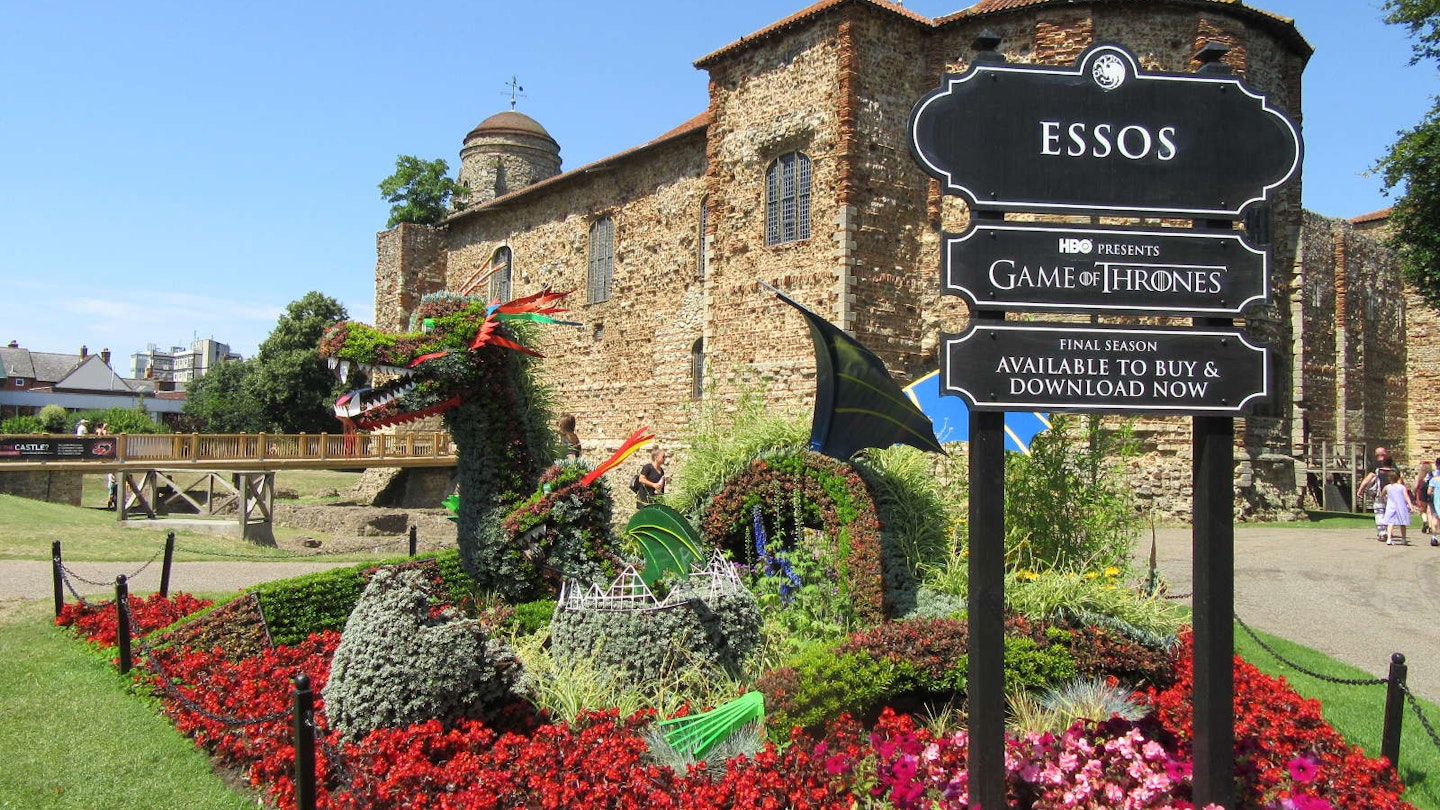Surprising as it may seem, London wasn’t always the British capital. The Essex town of Colchester held that honour for 17 short but prosperous years. The town’s full history spans Roman rule, the Norman Conquest, Saxon settlements, the Reformation, the Black Death, and the English Civil War, all of which have left their remarkable mark on the landscape.
Colchester serves as both a gateway to the bucolic charms of East Anglia and a regional cultural hub. The town centre is compact, easily walkable, and accessible; it is just an hour from London with up to 6 trains arriving hourly.
1. It’s Britain’s first capital
When the Romans conquered Britain in AD 43, they made their capital in the most powerful Celtic settlement, Camulodunum (Colchester). Resentments boiled over among the oppressed tribes, which culminated in Boudica’s uprising in AD 60. Her army slaughtered every single Roman in Colchester and reduced the town to ashes. Interestingly, Colchestrians seem to hold no grudges, as the fearsome warrior queen has become a symbol of heroic resistance. Boudica is commemorated in statues at North Station’s roundabout and on the wall of the Town Hall.
2. The oldest Roman ruins in the UK
Although the Romans later moved the capital to London, they went about rebuilding Colchester. This time, they enclosed the town within defensive walls, which stand to this day. The western wall even features the country’s largest surviving Roman town gateway, the Balkerne Gate.
The remains of Britain’s only known chariot-racing track were uncovered south of the walls. The Roman Circus (open from April to late September) offers free outdoor and indoor displays. While little remains of the racing track itself, replica models, informational panels, and guided tours (£4.50) help bring to life what was undoubtedly an epic 8,000-seat arena.
3. The largest Norman keep in Europe
Colchester Castle served as the blueprint for the iconic Tower of London and stands as an integral part of Britain’s heritage. Throughout its history, it has served various purposes—a royal fortress, prison, air-raid shelter, and even a wedding present. Today, it operates as a museum. Strikingly, it was built upon the ruins of the Temple of Claudius, and it’s worth paying a little extra to take a guided tour of the 2,000-year-old vaults and the castle roof.
The museum houses the town’s most significant treasures and features interactive displays friendly to children, including props and costumes. The dungeon once held martyrs, accused “witches,” and other prisoners, many of whom perished due to the appalling conditions while awaiting trial. Don’t miss Claudius Gateway opposite the castle, which features a unique café with a glass-covered floor showcasing the ruins of the Roman temple’s impressive 120-metre arcade—the largest in the UK.
4. The city’s fortunes and failures are written in stone
The Norman invaders proved to be prolific builders and they cleverly recycled 1,000-year-old Roman tiles and bricks in their constructions. St Botolph’s Priory’s soaring arches are virtually all that remains after its destruction during the English Civil War, but they hint at its former glory. Similarly, St John’s Abbey suffered a similar fate, although its elaborate gateway still stands proudly.
The brutal 1648 Siege of Colchester forced starving citizens to resort to eating cats, dogs, rats, and even horses. You can still observe the bullet holes in the 15th-century Old Siege House, where you can also enjoy a delicious meal (with no domesticated or feral animals on the menu).
5. Stroll in a Victorian park
The landscaped grounds of Castle Park provide a green oasis in the town centre. This park features a boating lake, play area, bandstand, café, award-winning horticulture, and an abundance of friendly squirrels accustomed to human contact and snacks. Additionally, there is a variety of festivals, fairs, and concerts that entertain visitors of all ages. The River Colne meanders through the Lower Park, and you can follow it to the artsy quayside village of Wivenhoe if you fancy a 4-mile walk (a convenient 8-minute train journey as well).
The visitor centre in Hollytrees Museum at the edge of the park is a resource for tourist inquiries and walking tours. By unpacking the domestic life of a Georgian household, the museum is filled with toys, clocks, and art that may evoke some serious dolls’ house envy among nostalgic adults.
6. Lose yourself in picture-postcard lanes and buildings
The Dutch Quarter, adjoining the park, is one of the prettiest neighbourhoods in Colchester. This area was home to Flemish refugees escaping religious persecution in 16th-century Europe, and many of the timber-framed, pastel townhouses have been restored or remain intact. Beneath the Tudor buildings lies a Roman amphitheatre, a small segment of which can be glimpsed on Maidenburgh Street. The Dutch not only introduced their radical ideas but also brought superior weaving skills, establishing a cloth trade that contributed significantly to Colchester’s wealth.
7. Art, secret gardens, and beer
Firstsite stands out as a modern arts venue that complements its surroundings effectively. The crescent-shaped gallery, often referred to as the ‘Golden Banana’, consistently showcases fresh exhibitions, activities, and screenings. Positioned across from its entrance, another gallery, The Minories, features a beloved tea room and a peaceful walled garden adorned with a striking Gothic folly.
8. Elephants everywhere
Colchester has been associated with elephants ever since Emperor Claudius triumphantly made his entrance on the back of one. Dominating the town’s skyline as you arrive by train is a Victorian water tower near the Balkerne Gate, nicknamed ‘Jumbo’. The name stuck, and its weather vane now proudly displays an elephant. Today, Colchester Zoo features “gentle giants” that are a star attraction. You might also notice a few elephant-shaped signs scattered around the town, including the Church Street Tavern’s logo, located under Jumbo’s shadow.





